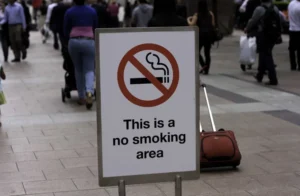The rule would be designed with the goal of making it easier for tobacco users to quit and help prevent youth from becoming regular smokers.

The Biden administration plans to propose a rule to establish a maximum nicotine level in cigarettes and other finished tobacco products in an attempt to make them less addictive, the White House Budget Office said Tuesday.
The rule, expected in May 2023, would be designed with the goal of making it easier for tobacco users to quit and help prevent youth from becoming regular smokers, according to a document released by the White House Budget Office.
The proposal comes as the Biden administration doubles down on fighting cancer-related deaths.
Earlier this year, the government announced plans to reduce the death rate from cancer by at least 50% over the next 25 years.
Nicotine is the addictive substance in tobacco. Tobacco products also contain several harmful chemicals, many of which could cause cancer.

Tobacco use costs nearly $300 billion a year in direct healthcare and lost productivity, according to the US Food and Drug Administration (FDA).
Cigarette smoking and exposure to tobacco smoke cause about 480,000 premature deaths each year in the United States. Health experts have long said it is the largest cause of preventable deaths.
More than 7,300 nonsmokers die each year from lung cancer caused by secondhand smoke, according to the US Centers for Disease Control and Prevention. The current smoking rate is 12.5% in the US for adults.
In April, the FDA issued a long-awaited proposal to ban menthol cigarettes and flavored cigars, seen as a major victory for anti-smoking advocates.
The news on the proposed rule was earlier reported by the Washington Post.

